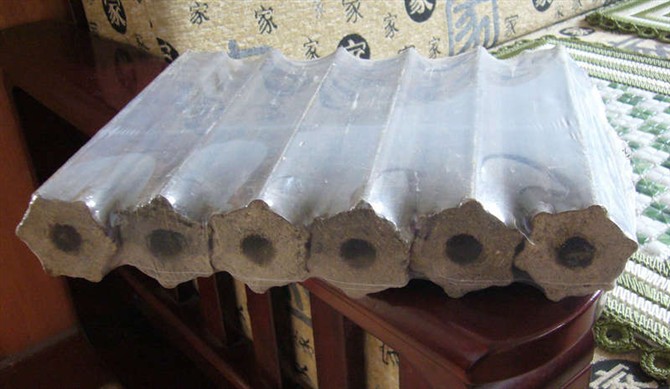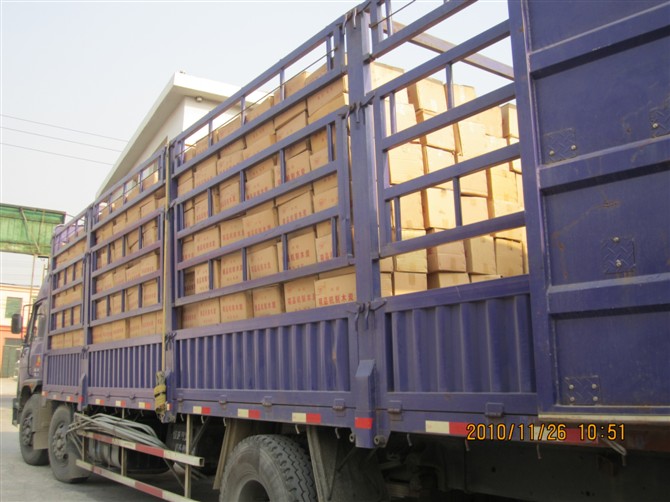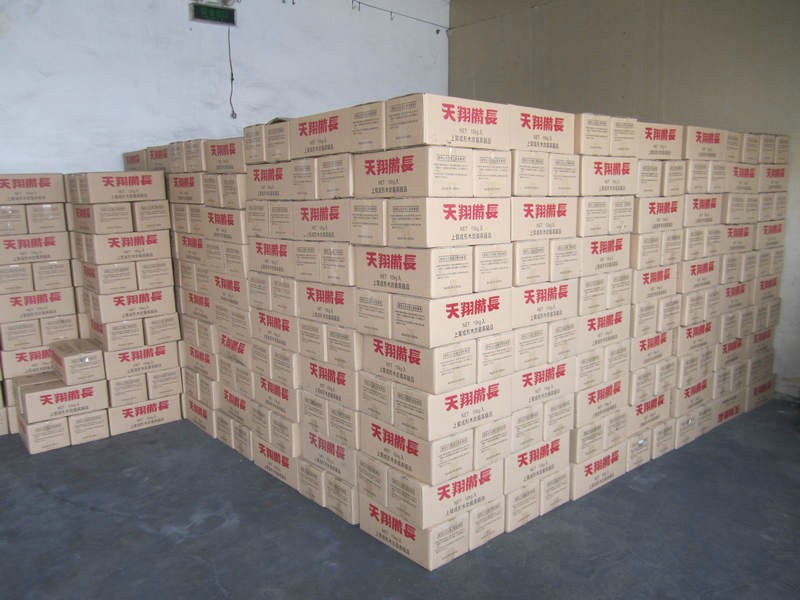Competitive Briquette Market
Briquette Competitive Market
With the rising demand and widely application of briquette in more and more field nowadays, the competition of briquette market is becoming more and more fierce. Briquette can be used in barbecue or as the warm fuel in winter because of their features of smokeless and tasteless. Therefore, briquette machine is also getting well known in home and abroad. The machine-made charcoal made by briquette machine has replaced the charcoal made by traditional earth kiln, which greatly reduces the production cost and improves the economic profits.

In a competitive market place the success of briquettes is linked to its performance compared with the competition. A number of key performance features upon which choices of fuel appeared to be being made: energy content, price, heat intensity, length of burn, extinguish ability and level of smoke production. Here under the table compares these features and details the energy content constant across each fuel, and it shows that per unit of energy delivered. Briquettes are competitive on price with all fuels and sometimes sold at a lower price. Energy conservation laws dictate that longer burn time must be traded off against lower heat intensity: briquettes tend to be burnt for longer but produce a less heat intensity. This is a a key selling point, as discussed below:
A comparison of the characteristics of domestic energy fuels
|
|
Briquette |
Kerosene |
Charcoal |
Firewood |
|
Quantity considered(constant energy) |
1.4KG=30MJ |
0.78KG=30MJ |
1.0KG=30MJ |
2.7KG=30MJ |
|
Price |
Highest $1.6
Lowest $0.3 |
Highest $0.6
Lowest $ 0.55 |
Highest $ 0.3
Lowest $ 0.11 |
Highest $0.11
Lowest Free |
|
Relative heat intensity |
Low |
Variable |
Moderate |
High |
|
Relative length of burn |
High |
Variable |
Moderate |
Low |
|
Extinguishable |
No |
Yes-easy |
Yes-difficult |
Yes-moderate |
|
Amount of smoke produced |
Low |
None |
Low |
High |
Note: source Field Study2009

 Get to know more about briquette machine, link here
Client-oriented Analysis
Get to know more about briquette machine, link here
Client-oriented Analysis
Who might actually buy briquettes then? To answer this, the pool of potential consumers was divided into user groups, based on those encountered in the study. An overall idea of the entire market was gained by examining each user group.
-
-
Urban and Peri-urban Households
Urban and peri-urban households account for a large section of demand for heating fuel and are very important target markets for briquettes.
Existing Practices & Potential for Briquettes
The majority of households in urban and peri urban areas use charcoal to cook in a jiko. The percentage using an improved jiko varies by area. For most applications charcoal provides the cheapest fuel. Kerosene is also used by many able-to-pay householders and restaurants. The benefit of kerosene is the speed with which it can cook food but a separate stove is required. It is relatively expensive when compared with charcoal. Firewood is rarely used, mainly due to the smoke produced and also because it is less easily available.There is the potential for briquettes to compete with and replace a significant proportion of charcoal usage. Household consumers using briquettes reported saving money on fuel because of the longer burn duration of briquettes compared with charcoal. A common response was “I liked that it burns for a longer time and heat remains for longer”. For this reason briquettes can be popular with consumers who wish to cook dishes requiring a long cooking time such as maize, beans and rice. Briquettes however, were only ever observed to form part of a fuel mix; charcoal and other fuels are still purchased for certain purposes, albeit in lesser volumes. Briquettes are less able to compete with kerosene as they take longer to light and provide a lower and consistent heat. The use of briquettes alongside kerosene and lesser quantities of charcoal is the most likely scenario. Briquettes have been promoted as substitutes for unsustainable charcoal. Energy density, ash content, associated smoke and fumes, compatibility with cooling appliances, availability of the fuel and type of food to be prepared, which are often more nuanced, also influence these choices.
Interviews with households using high-energy briquettes reveal that the main reason is the perceived environmental benefits associated with these products. These households tend to have relatively higher incomes. Fuel wood users could transition to using briquettes. However, cost, availability, as well as whether it is suitable for current cooking structures and processes will present the first challenge. The bulk amount of briquettes is sold in urban and peri-urban areas, while the majority of the fuel wood users are in rural areas.
Observed Drivers and Barriers
The drivers and barriers to urban uptake of briquettes in line with the above scenario are now considered. That is, reasons why consumers may demand more briquettes (drivers) and reasons that could prevent further demand (barrier). Clearly, both external conditions (e.g. price of competing fuels) and qualities of the briquettes (e.g. burn-time, price) varied from place to place.
The findings strongly suggest that for urban and peri-urban consumers to demand briquettes there must be a clear advantage on price over the main competing fuel, charcoal. This can be based upon either a lower cost per unit of energy or lower cost per hour of burn time. In the areas studied the price of briquettes was not always cheaper; a fact that goes a long way to explaining success or failure of the briquettes enterprises encountered. When existing cooking practices with charcoal are so ingrained it is difficult for an unconventional fuel to compete unless the price is lower. The concept of a fuel being cheaper than charcoal per hour of burn time, is difficult for consumers to comprehend. It is important therefore, that the advantages of long-burn duration are promoted by briquette producers to differentiate briquettes from charcoal.21 Compatibility of briquettes with existing cooking equipment was also a crucial factor. Briquettes can be burned in a traditional or improved jiko, however this assumes that consumers own such a stove. Requiring consumers to first buy a specially designed stove hugely restricts demand and makes little commercial sense when fuels can be easily designed to work in conventional equipment. As discussed above, briquettes are unlikely to ever take a full share of the fuel market. For certain applications, like making tea in the morning, many want a quick source of heat. Briquettes – as they are conventionally made - do not provide this; not only do they produce less intense heat, they tend to be more difficult to light and almost impossible to extinguish and relight. Two more factors emerged which although barriers are temporary in nature. Firstly, in order to generate demand, awareness must first be built, requiring active marketing. Successful examples include giving selected users free product samples and offering demonstrations on how to use them. In Ranen, where this form of promotion has taken place, awareness of briquettes was high amongst local people. In a random sample of 36 people interviewed, 27 had heard of briquettes (75%) and 13 had tried using briquettes (36%) – uptake mostly limited by supply. Secondly, a related factor is that in most urban areas there is an established and widespread network of charcoal sellers and distributors. A new fuel product must overcome (or harness) the inertia of consumer loyalty, habits and convenience, possibly by utilising existing networks of fuel suppliers.
Firewood
Why don’t urban consumers use firewood as much as in rural areas? One of the reasons consumers stated was that living in a densely populated area, they could not use fuels that produce a lot of smoke and contribute to air pollution. The fact that - if material is first carbonised - they can be smokeless gives briquettes (and charcoal) an advantage over firewood. Firewood also requires dry storage space, which is often limited in urban dwellings.
Exisiting Practices and Space for Briquettes
The majority of rural householders with a low income use three-stone fireplaces or firewood jikos. Firewood is collected for free in the surrounding areas or bought cheaply in the nearest town or village. A number of householders also use a charcoal jiko occasionally if no firewood is available. Kerosene use is less common in rural areas. For example, a likely scenario is that demand for briquettes in rural areas of Kenya will remain relatively low for some time to come. They could provide an alternative to purchasing charcoal when firewood is unavailable but only if compatible equipment is owned. A more optimistic scenario would see some consumers changing towards briquettes - if priced attractively - for the increased convenience over collecting and storing firewood and the increased burn duration. The situation is dynamic and forces such as deforestation and government regulation could lead to more active promotion of alternative fuels.
Observed Drivers and Barriers
Demand for briquettes in the rural areas that have been assessed was generally low. Firewood or agricultural residues were often available for free or at a very low cost. In isolated areas the smoke from burning firewood can be dispersed and does not present a significant issue for householders. Furthermore a large proportion of rural householders do not own alternative cooking equipment (e.g. a charcoal jiko, or kerosene stove), presumably owing to lower levels of income - a further barrier to changing fuels. There appeared to be few immediate incentives to move away from this practice towards briquettes or other fuels, despite possible long-term or society-wide benefits. Although demand from rural areas is generally low, one interesting case of a rural producer selling ‘hand-made’ briquettes from sawdust and charcoal dust bucked the trend.
-
-
Restaurants, Schools and Other Uses
Outside of household use, data from other countries suggests that the demand for fuel from institutions and industries could be very large. A micro-scale producer could focus on supplying just a handful of consumers like large schools or hospitals, since individually their fuel usage is so large. Indeed, for the country’s biggest producer (Chardust) this sector makes up the majority of its sales.
Restaurants and Eating Places
Most restaurants are located in urban or peri-urban areas and drivers and barriers to briquette uptake were found to be similar to that of urban and peri-urban households. It was particularly evident from interviews held with a number of establishments that they will need a mix of fuels – not just briquettes - for example, kerosene or other quicker burning fuel are needed for certain
applications. Those establishments that were given a sample of briquettes to try out were impressed with its performance on the whole. Many indicated a strong interest in using briquettes if they were available locally at a price competitive with charcoal. Briquettes would primarily be used for keeping food warm, or for food with a predictable demand that requires longer time to cook.
A number of schools were visited and it became clear that since they predominantly use firewood their demand has some similarities to rural households. Schools typically pay for24 firewood in bulk e.g. by the truck-load. It is likely that the briquettes industry would find competing on cost a huge challenge given how cheap firewood is. Furthermore, micro-scale producers may not be able to cater for the volume of briquettes required in bulk-batches. The uptake of energy efficient stoves is increasing and is another important factor, since many such stoves are actually incompatible or would need to be modified to use briquettes. The best chance for briquette producers appears to be supplying to schools currently using charcoal.
Industrial Uses
Charcoal is currently in use by a number of industries, especially where a longer or cleaner burning fuel than firewood is required. In such instances the scope for briquettes as a substitute is large. For example, poultry farmers in the highlands are known to be taking up the use of briquettes to heat cages overnight when temperatures are low. This application is suited to briquettes since a longer burning fuel is desirable to avoid the need to add extra fuel. Another application observed was that of a blacksmith who would mix briquettes with conventional charcoal. Charcoal was still needed to provide sufficient heat intensity, whilst the briquettes retained heat and allowed the blacksmith to significantly cut down total use of fuel.
There was a small number of consumers found (both domestic and commercial consumers) who were willing to pay an additional price for a fuel from a more sustainable source. One producer has been specifically targeting this market and has had limited success selling to wealthier consumers/ expatriates and direct to high-end restaurants. Currently, the demand for such a value-added fuel may not large enough to support a profitable enterprise.
KMEC is capable of offering a package of project with delicate designs and high-quality
briquette plant to move forward with clients from all over the world! If you are looking for briquette machine with high quality, please feel free to contact us.
------------------------------------------------------------------------------------------------------------
Quality of briquettes in the first place shall be guaranteed to lay a foundation for charcoal production. Both theories and practices have solidly proved that the moisture content of material, briquette machine propeller and proper temperature are the three irreplaceable factors for manufacturing supreme-quality charcoal.


